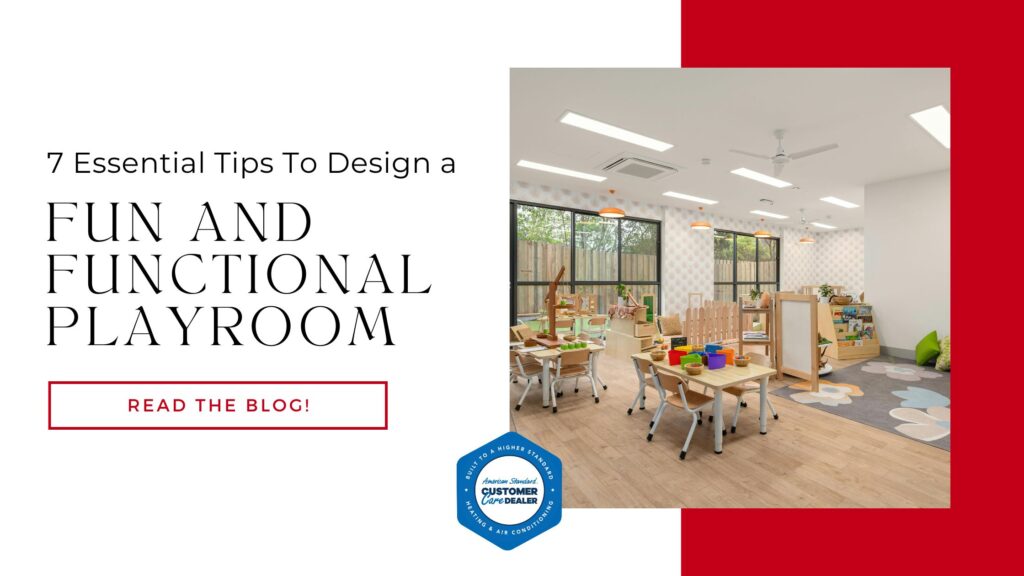7 Essential Tips to Design a Fun and Functional Playroom
Creating a playroom that sparks imagination while staying organized can be a real challenge for many families. You want a space where kids can have fun, explore, and learn — but also one that keeps clutter under control and fits into your home’s overall style.
Designing a fun and functional playroom requires thoughtful planning and smart choices. With the right balance, you can transform any room or corner into a safe, comfortable, and inspiring play space for your kids.
In this guide, we’ll share 7 essential tips to help you design a playroom that checks all the boxes for kids and parents alike.
1. Prioritize Safety and Comfort
First and foremost, your playroom needs to be a safe space. This means choosing child-friendly materials, securing furniture, and creating an environment that supports healthy play.
- Use soft flooring options such as foam mats, rugs, or carpet to cushion falls.
- Anchor bookshelves, toy storage, and other furniture to walls to prevent tipping.
- Ensure electrical outlets are covered and cords are out of reach.
- Consider the room’s air quality and ventilation to keep kids breathing easy during play.
At Air Refrigeration & Contracting, we recommend installing high-quality air purification systems to reduce allergens and maintain fresh air in your children’s play areas.
2. Choose Durable and Easy-to-Clean Materials
Kids are messy, and playrooms tend to take a beating. Select furniture, toys, and decor made from durable, washable materials.
- Opt for washable slipcovers on chairs and sofas.
- Choose storage bins and shelves made of plastic or coated wood that wipe clean easily.
- Use washable paint on walls or chalkboard paint for added creativity.
Easy-to-clean surfaces save time and help maintain a tidy, inviting space.
3. Organize Smartly With Accessible Storage
Clutter can quickly turn a fun space into chaos. The key is to have storage solutions that are easy for kids to use and encourage them to clean up.
- Use low shelves and bins that kids can reach independently.
- Label storage containers with pictures or words to teach organization skills.
- Create zones for different activities — arts and crafts, reading, building toys — to keep items grouped logically.
With good organization, playtime is more enjoyable and cleanup is a breeze.
4. Design Zones for Different Activities
Dividing your playroom into activity zones maximizes both fun and functionality. This approach allows children to focus on different types of play without distractions.
- Create a quiet reading nook with comfy pillows and good lighting.
- Set up a craft station with a small table, art supplies, and an easy-to-clean surface.
- Dedicate space for active play with mats or an indoor climbing wall.
- Include an area for imaginative play with dress-up clothes or a play kitchen.
Zones make it easier for kids to switch gears and keep the room organized.
5. Incorporate Kid-Friendly Lighting and Ventilation
Good lighting is essential to create an inviting and safe play environment. Combine natural light with bright, adjustable artificial lighting.
- Use soft, overhead LED lights for general illumination.
- Add task lighting for reading or crafts.
- Make sure windows have shades to control sunlight glare.
- Ensure proper ventilation and air circulation to keep the space fresh and healthy.
Consider installing an air purifier or upgraded HVAC filtration to maintain optimal air quality, especially if kids spend long periods in the room.
6. Add Personal Touches and Fun Decor
Kids love a playroom that feels special and inspires creativity.
- Use bright colors, fun patterns, and themed decor.
- Display children’s artwork or DIY projects on walls or cork boards.
- Incorporate educational elements like world maps, alphabet charts, or numbers.
- Add cozy seating options like bean bags or floor cushions.
Personalized touches help children feel connected to their space and encourage imaginative play.
7. Plan for Growth and Flexibility
Children grow fast, and so do their interests. Design your playroom with flexibility so it can evolve.
- Choose modular furniture that can be rearranged or repurposed.
- Opt for neutral base colors and switch out accessories seasonally or as kids age.
- Incorporate storage that can adapt from toys to books, sports gear, or school supplies.
A flexible design helps your playroom stay relevant and useful through the years.
Common Questions About Designing Playrooms
Q: What is the best flooring for a playroom?
A: Soft, cushioned flooring like foam mats, carpet, or rugs are ideal. They protect kids during active play and are comfortable for sitting.
Q: How do I keep the playroom organized with multiple kids?
A: Create clearly defined zones and assign storage bins to each child. Use labels or color coding to make cleanup easier.
Q: Is it important to control air quality in a playroom?
A: Yes, especially if children have allergies or asthma. Proper ventilation and air purification can reduce allergens and improve overall health.
Q: How much space do I need for a functional playroom?
A: Even a small corner can be turned into a functional play area if designed thoughtfully. Larger spaces allow for more zones and activities.
Q: Can I make a playroom multifunctional?
A: Absolutely! Many parents combine playrooms with homework areas, guest rooms, or hobby spaces by using modular furniture and clever organization.
Contact Us
Air Refrigeration & Contracting is here to help keep your playroom healthy and comfortable with our air purification solutions and HVAC services. Contact us today for more information! Visit arcbrewton.com or give us a call at 251-867-9255 to learn more.
Air Refrigeration & Contracting is a trusted American Standard Heating & Air Conditioning Customer Care Dealer in Brewton, AL. Follow us on social media for more helpful home tips!









